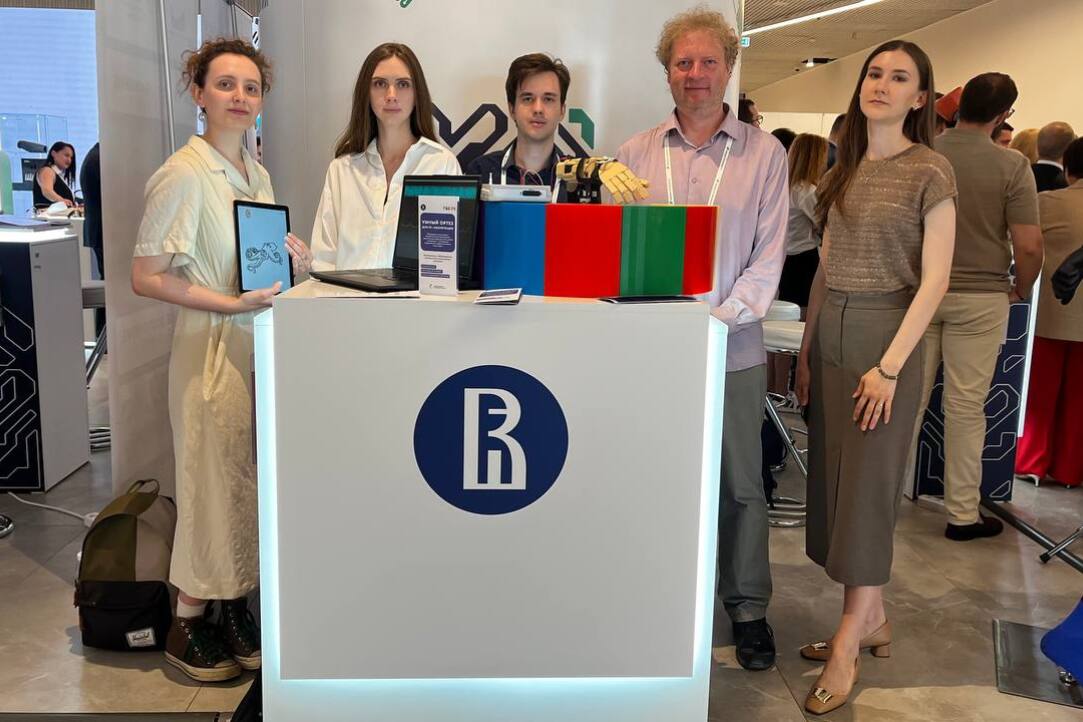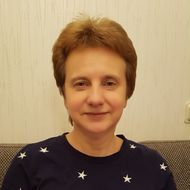HSE University Presents Smart Orthosis at Hope for Technology Forum

On July 10–11, 2025, Moscow hosted the 10th Hope for Technology National Forum of the Rehabilitation Industry and Universal Design. The event was aimed at discussing innovative achievements in the rehabilitation industry. The MIEM Student Design Bureau and the HSE Institute for Cognitive Neuroscience presented a smart orthosis, which was developed at the request of orthopedists.
The Smart Orthosis project is a comprehensive rehabilitation system geared towards helping in the development of motor activity in patients (primarily children) who experience difficulty bending their arm at the elbow joint. The system operates on the basis of an electromyographic signal (EMG). The developers guarantee an individual approach with automatic personal adjustment to the individual characteristics of the patient. This development solves several rehabilitation problems at once: it increases the effectiveness of surgical intervention, reduces dependence on third parties (psychologists, parents) in existing rehabilitation programmes, and improves the ability to monitor the recovery process.
Evgeny Blagoveshchensky, Leading Research Fellow at the Centre for Cognition & Decision Making of the Institute for Cognitive Neuroscience, notes that the idea to develop an orthosis arose following the request of orthopedists as a result of cooperation between HSE University and the G. Turner National Medical Research Center for Pediatric Orthopedics and Trauma Surgery of the Ministry of Health of the Russian Federation. ‘In Russia, rehabilitation processes are often standardised, and personal programmes are an exception. Initially, we tried to find ready-made solutions, but they were unavailable even on the global market. This prompted us to create our own solution. Thanks to specialists from the MIEM Design Bureau, we managed to create the first prototype, which was presented at the exhibition. It is an exoskeleton with assistive functions that can adapt to the patient's needs. We hope to put it into production soon,’ adds Blagoveshchensky.

The orthosis consists of a mechanical exoskeleton, software, a biofeedback system, a digital gaming platform, and myography sensors. The intelligent system will analyse the patient's movements and adjust to them, providing fixation in the hand and biceps area and precise movement control.
The project was well received by forum guests and Minister of Industry and Trade Anton Alikhanov, who expressed interest in the implementation of the product and its potential for further application in daily practice.

Dmitry Kovalenko
Dmitry Kovalenko, HSE University Vice Rector and Director of HSE MIEM, says that the renewed Student Design Bureau at MIEM is intended to become an innovative hub for supporting student design developments aimed at further widespread implementation. ‘This means comprehensive organisational, methodological and substantive support, as well as the development of optimal models for the institute's interaction with partner companies and customers. The smart orthosis is the first step, a kind of pilot project. It’s great that it was highly praised by experts in science and the real sector,’ he adds.
During the forum, specialists from the MIEM Student Design Bureau and the HSE Institute for Cognitive Neuroscience held talks with representatives of potential partner companies of the project.

Ilya Ivanov
Ilya Ivanov, Leading Research Fellow at the School of Electronic Engineering of the HSE Tikhonov Moscow Institute of Electronics and Mathematics and Head of the MIEM Design Bureau, comments: ‘We consider healthcare to be one of our current priorities. It’s a huge field for the application of AI technologies. Our students are happy to participate in such projects, both because there are many truly non-trivial and creative tasks, and because these tasks are aimed at achieving perhaps the most worthwhile goals—preserving human health and helping with rehabilitation.’

Veronika Prokhorova
Veronika Prokhorova, MIEM's Deputy Director for Project Work, notes that the MIEM Design Bureau, where students implement technological product projects, has already established fruitful partnerships with large manufacturers of various modern equipment, as well as among leading HSE departments. ‘We value these partnerships and hope to present other developments of the design bureau in the near future,’ adds Prokhorova.
For more news about the activity of the HSE MIEM Design Bureau, please see the official Telegram channel (in Russian).
About the Hope for Technology Forum
The forum was held on July 11–12 in Moscow at the Lomonosov Cluster of the Moscow State University Innovation Centre. The participants, including leading experts in the field of healthcare, rehabilitation technologies, representatives of ministries, government agencies, and large equipment manufacturers, had an opportunity to learn more about advanced developments and integrated solutions aimed at creating a barrier-free environment, as well as the latest technological solutions designed to make life easier for people with disabilities and limited mobility.
See also:
Banking Crises Drive Biodiversity Loss
Economists from HSE University, MGIMO University, and Bocconi University have found that financial crises have a significant negative impact on biodiversity and the environment. This relationship appears to be bi-directional: as global biodiversity declines, the likelihood of new crises increases. The study examines the status of populations encompassing thousands of species worldwide over the past 50 years. The article has been published in Economics Letters, an international journal.
Scientists Discover That the Brain Responds to Others’ Actions as if They Were Its Own
When we watch someone move their finger, our brain doesn’t remain passive. Research conducted by scientists from HSE University and Lausanne University Hospital shows that observing movement activates the motor cortex as if we were performing the action ourselves—while simultaneously ‘silencing’ unnecessary muscles. The findings were published in Scientific Reports.
Russian Scientists Investigate Age-Related Differences in Brain Damage Volume Following Childhood Stroke
A team of Russian scientists and clinicians, including Sofya Kulikova from HSE University in Perm, compared the extent and characteristics of brain damage in children who experienced a stroke either within the first four weeks of life or before the age of two. The researchers found that the younger the child, the more extensive the brain damage—particularly in the frontal and parietal lobes, which are responsible for movement, language, and thinking. The study, published in Neuroscience and Behavioral Physiology, provides insights into how age can influence the nature and extent of brain lesions and lays the groundwork for developing personalised rehabilitation programmes for children who experience a stroke early in life.
Scientists Test Asymmetry Between Matter and Antimatter
An international team, including scientists from HSE University, has collected and analysed data from dozens of experiments on charm mixing—the process in which an unstable charm meson oscillates between its particle and antiparticle states. These oscillations were observed only four times per thousand decays, fully consistent with the predictions of the Standard Model. This indicates that no signs of new physics have yet been detected in these processes, and if unknown particles do exist, they are likely too heavy to be observed with current equipment. The paper has been published in Physical Review D.
HSE Scientists Reveal What Drives Public Trust in Science
Researchers at HSE ISSEK have analysed the level of trust in scientific knowledge in Russian society and the factors shaping attitudes and perceptions. It was found that trust in science depends more on everyday experience, social expectations, and the perceived promises of science than on objective knowledge. The article has been published in Universe of Russia.
Institute for Robotics Systems Established at HSE University
As decided by the HSE University Academic Council, a new Institute for Robotics Systems will be established at HSE, and with a strong fundamental base. It will cooperate with relevant departments across the university and engage students and doctoral candidates in research and development (R&D). First Vice Rector of HSE University and Director of the Institute for Statistical Studies and Economics of Knowledge, Leonid Gokhberg, discussed the expected practical results and the framework for cooperation with an industrial partner.
HSE Seeks New Ideas for AI Agents: Initiative Competition Launched
HSE University is inviting researchers and lecturers to present concepts for new digital products based on artificial intelligence. The best projects will receive expert and technological support. Applications are open until December 19, 2025.
IDLab: Fascinating Research, Tough Deadlines, and Academic Drive
The International Laboratory of Intangible-driven Economy (IDLab) was established at the HSE campus in Perm 11 years ago. Its expertise in data processing and analysis allows researchers to combine fundamental studies with applied projects, including the development of risk and cybersecurity models for Sber. The head of the laboratory, Professor Petr Parshakov, and Senior Research Fellow Professor Mariya Molodchik spoke to the HSE News Service about IDLab’s work.
HSE Lecturers Awarded Yandex ML Prize 2025
The Yandex ML Prize is awarded to lecturers and heads of educational programmes who contribute to the development of artificial intelligence in Russia. This year, 10 laureates were selected from 300 applicants, including three members of the HSE Faculty of Computer Science (FCS). A special Hall of Fame award was also presented for contributions to the establishment of machine learning as an academic field. One of the recipients was Dmitry Vetrov, Research Professor at the HSE FCS.
HSE Tops Ranking of Universities Participating in Priority 2030 Programme
The Russian Ministry of Science and Higher Education has published an updated list of participants in the Priority 2030 programme. A total of 106 universities will receive support this year. HSE University was included in the first group and topped the ranking.


